Process and Structural Models for Resistance Spot Welding
Pierluigi Mollicone, Martin Muscat, Ryan Debono
University of Malta
Resistance spot welding is an important joining process in which metal fuses through the heat input generated by the electrical resistance between surfaces. Metal fusion and subsequent solidification leads to the inevitable formation of residual stresses in the vicinity of the weld. Experimental measurement techniques are resource intensive, making computer aided engineering (CAE) an attractive way to simulate weld formation and assess their influence on the structural integrity of the spot welded component.This paper presents finite element analysis models developed to simulate the formation of residual stresses in a common resistance spot welding process and computationally assess their effect on a simulated tension shear test specimen. The welding process models are calibrated through experimental thermocouple readings and validated against hole-drilling residual stress measurements. The tension shear test structural models are carried out with a full three dimensional approach and results compared to simplified structural models.



